



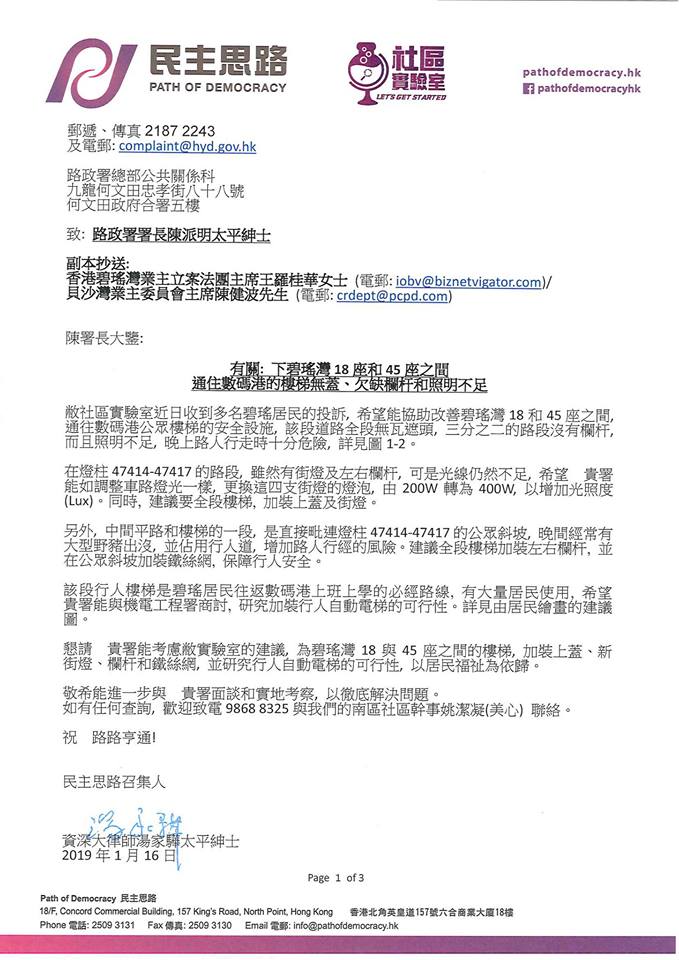
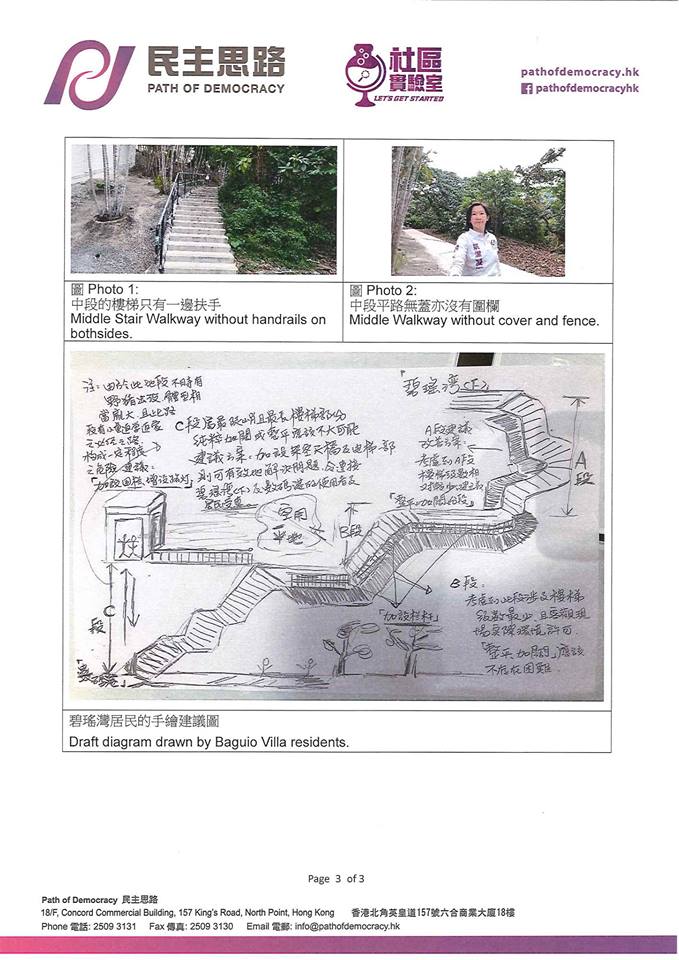
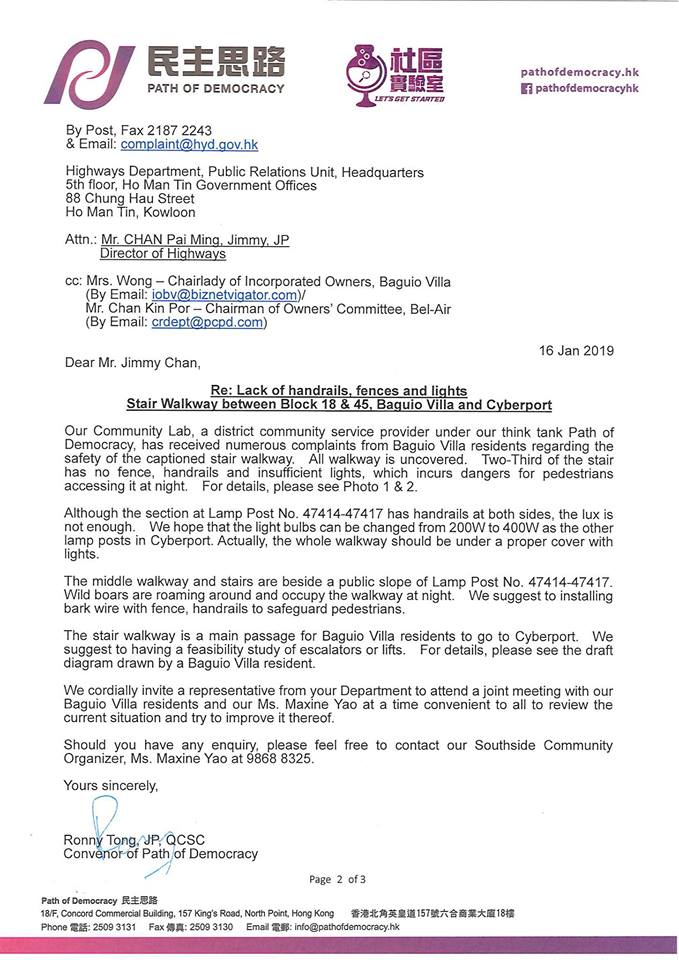


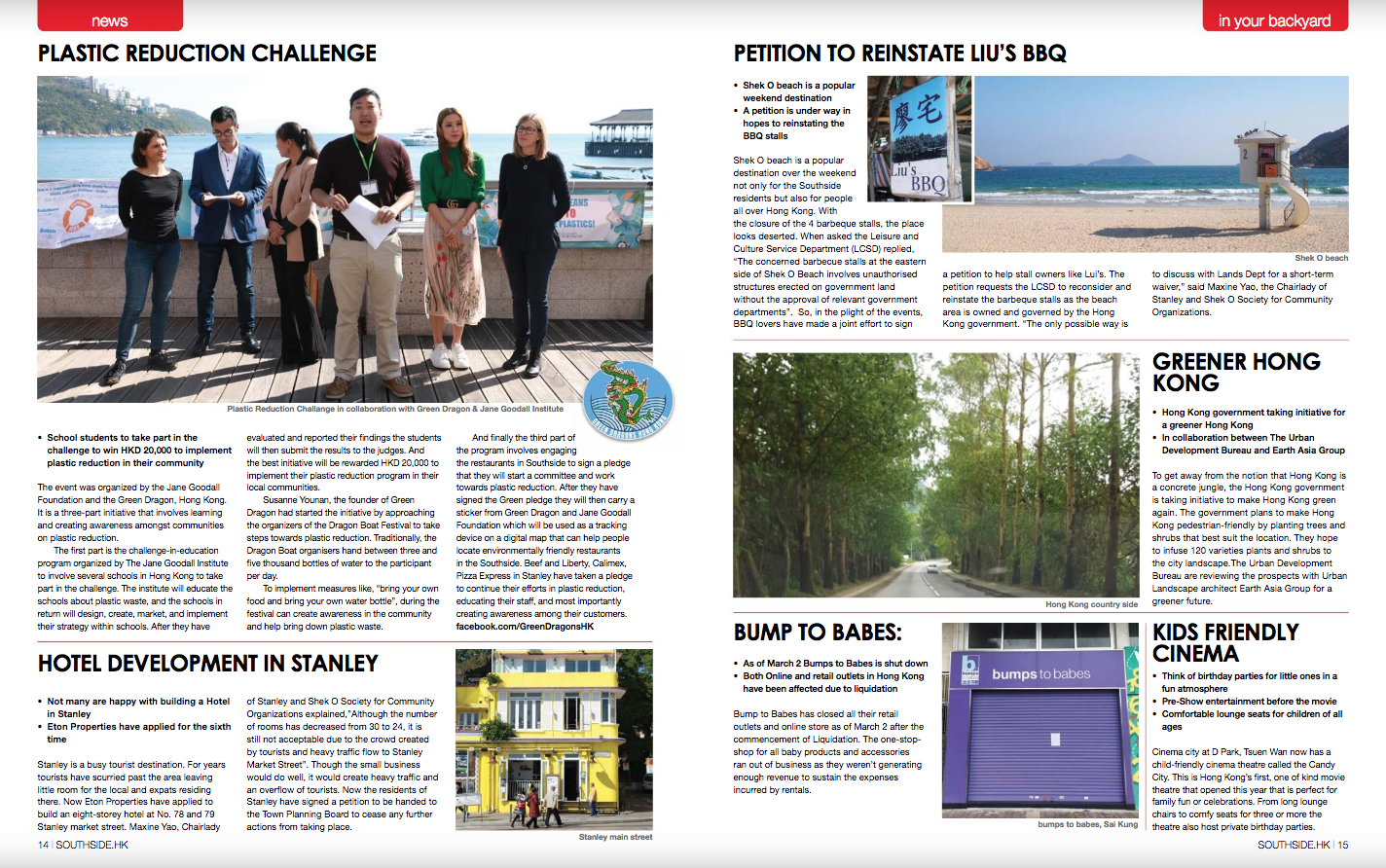
Plastic Reduction Challenge: From Southside Magazine(2018-04)
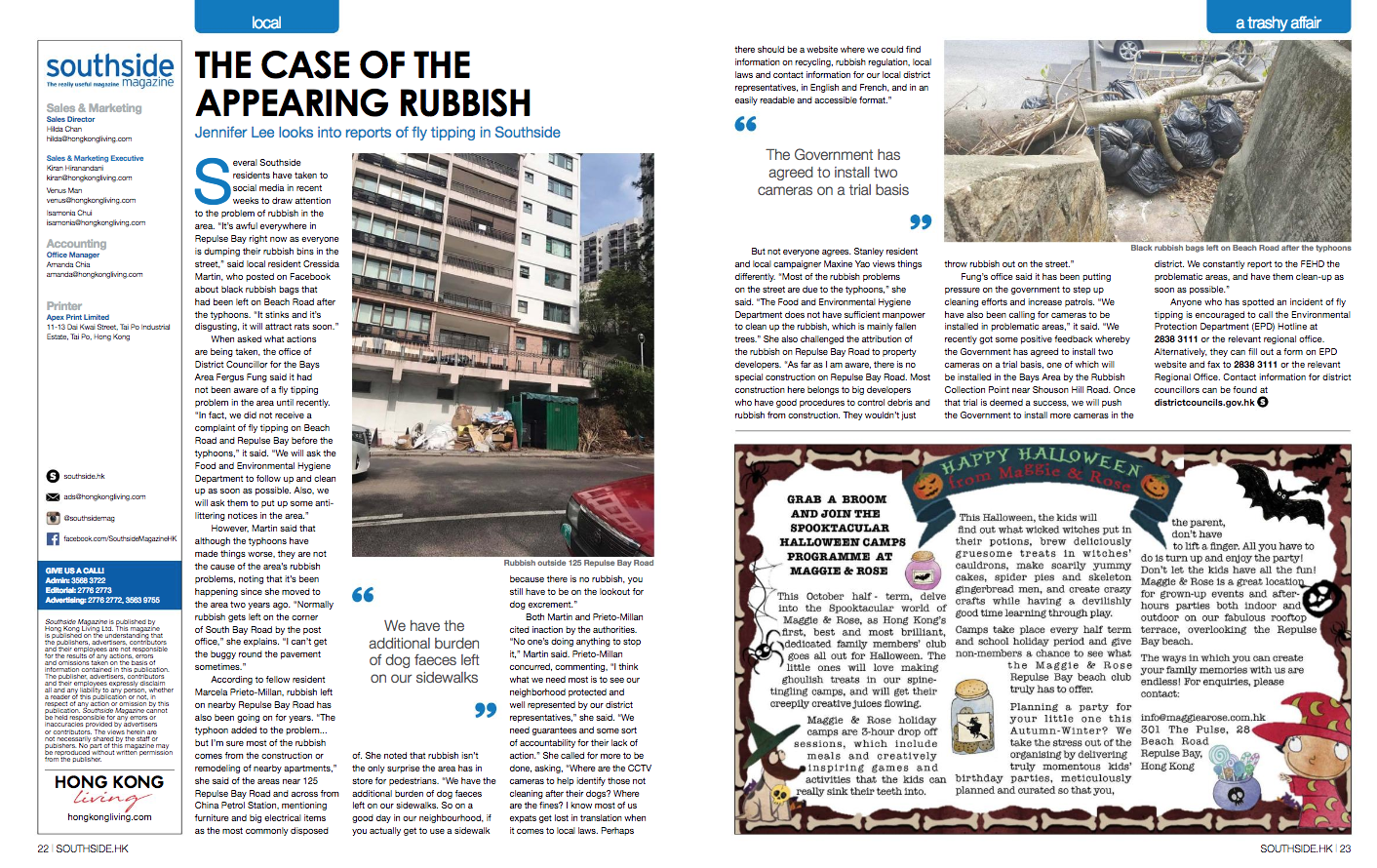
Plastic Reduction Challenge: From Southside Magazine(2017-10)
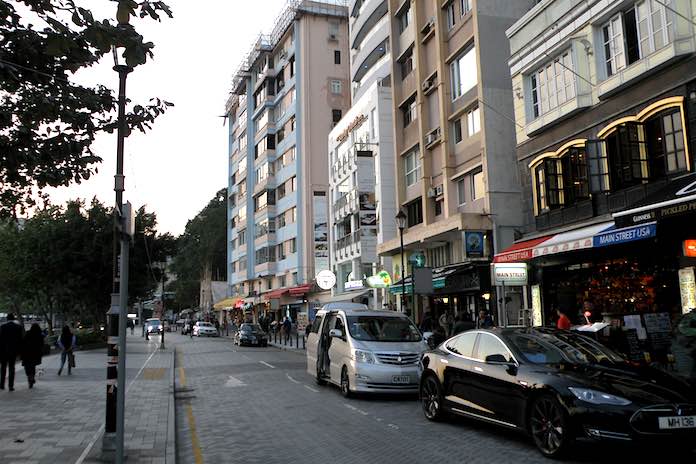
A developer has re-submitted an application to build a boutique hotel at 78-79 Stanley Main Street.
This latest submission follows an application made by the same company Rostar Co. Ltd., a subsidiary of Eton Properties, last September. Southside Magazine reported on the first application in November 2016. “In considering the growing demand of hotel accommodation and shop and services in the Stanley area,” the latest application reads, “the applicant intends to make better use of the site and to upgrade the local environment through the provision of a boutique hotel development with associated pedestrian facilities at the site. The current proposed scheme is an eight-storey hotel with 30 guest rooms”. To this end, the developer is seeking a minor relaxation of the height restriction, increasing it from 21m to 25.2m.
The application states that, “the site has long been occupied by single-storey structures for retail use since the 1970s”. Specifically, it was previously home to the Apple Mall, which housed a variety of shops selling everything from curtains to children’s apparel. It closed in 2014 following a 50 percent increase in government fees. Currently, according to local campaigner and Stanley resident Maxine Yao, the site is blocked off and surrounded by wooden boards.
“The proposed hotel development,” the application continues, “is in line with the government’s policy to promote tourism and will enhance Stanley as a popular suburban tourist town in Hong Kong. It is also in line with the planning objectives to improve pedestrian circulation along Stanley Market Road”.
However, not everyone agrees. Yao points out several issues with the developer’s plan. “The new plans by the developer encroach on the pedestrian area,” she says, “whereas the original plans didn’t. If they do this, the pavement will be narrower than it already is when we should be widening it”. She also raises concerns about the possibility of construction work on the pedestrianised area causing potential damage to a well-known banyan tree nearby on Stanley Main Street, whose roots are partly entangled in a WWII bunker beside the pavement.
The banyan has been given the classification OVT (old valuable tree) by the Leisure and Cultural Services Department. “It’s a very significant tree in Stanley,” Yao explains. “There’s a flower shop under the tree, so in Cantonese we call it ‘the flower shop tree’. We want to preserve and protect it.”
According to Marianne Yeo, long-time Stanley resident who speaks for other concerned locals, this old tree will need to have at least three major branches, which comprises almost half of its crown, removed to make way for the hotel construction. She also adds that this is “likely to destablise the tree roots which will already be weakened by construction tremors”.
While the developer’s plan says “the proposal can serve as a catalyst for townscape upgrading and will improve the pedestrianisation of the Stanley Market area”, many residents take a different view. “A lot of residents agree it will turn the area into Tin Wan, which has two boutique hotels owned by Eton Properties,” says Yao. “We already have a boutique hotel near Wong Ma Kok Road. If they build here too, thousands of visitors will come and block the whole road. When I posted about the plan on social media, most people opposed it—only a few merchants and district councillors support it.”
Yao points out that district councillor for Stanley and Shek O Ms Chan Yee Pui-ying and her husband, in fact, own four properties located close to the proposed hotel on Stanley Main Street. “The value of her shop will go up,” Yao explains, “so naturally she would support the development.”
However, the district councillor replied to Southside Magazine claiming that she neither supports nor opposes the development as the views of Stanley’s residents are her own as well, and says that the boutique hotel will not benefit her in any way.
The plan can be viewed and commented on by the public at: info.gov.hk/tpb
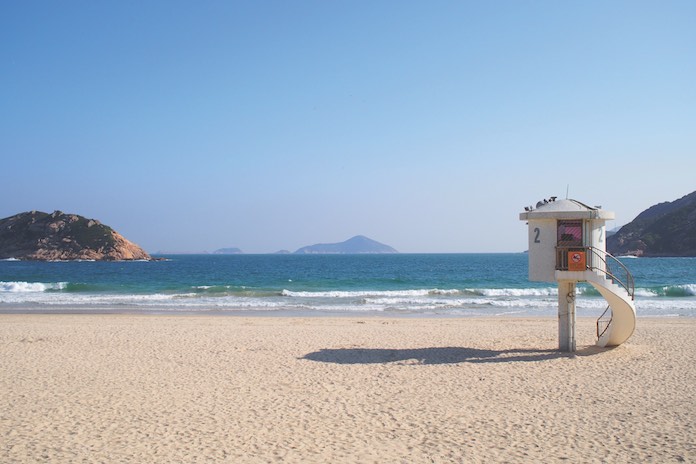
A petition has been initiated to request the government to reconsider and reinstate BBQ stalls in Shek O Beach.
Shek O beach is a popular destination over the weekend not only for the Southside residents but also for people all over Hong Kong.
With the closure of 4 barbecue stalls, the place looks deserted. When asked the Leisure and Culture Service Department (LCSD) they replied, ”The concerned barbecue stalls at the eastern side of Shek O Beach involve unauthorised structures erected on government land without the approval of relevant government departments”.

So, in the plight of the events, BBQ lovers have made a joint effort to sign a petition to help stall owners like Liu. At the time of writing, they have collected 3,774 signatures. Supporters like Shek O resident Michael Anderson commented on the page that “the BBQ pits are an asset to the village.”
The petition requests the LCSD to reconsider the closure orders and allow barbecue stall owners like Liu to reinstate their barbeque stalls. “The only possible way is to discuss with Lands Dept for a short-term waiver,” said Maxine Yao, the Chairlady of Stanley and Shek O Society for Community Organizations.
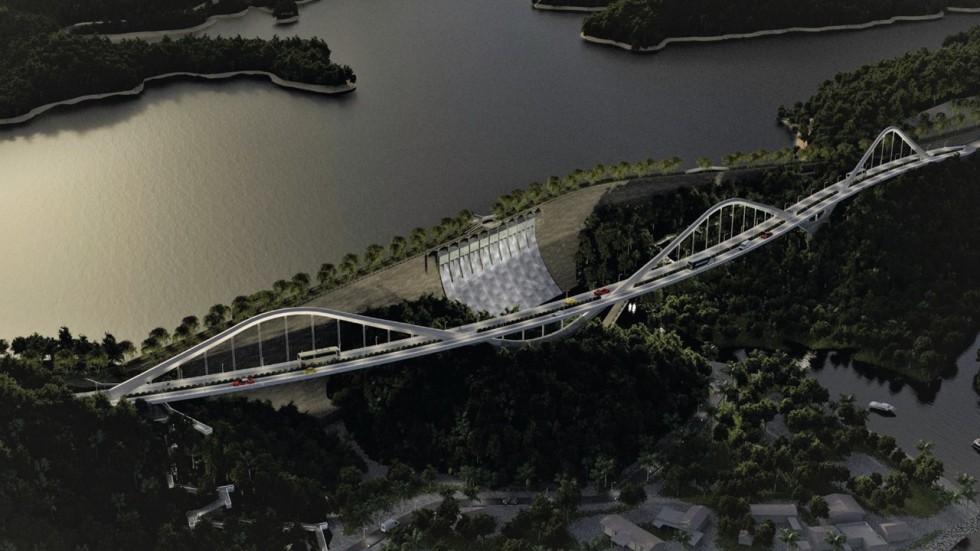
A Hong Kong-based architect has unveiled his latest plan for an alternative method to cross Tai Tam Reservoir, notorious for chronic traffic problems due to the narrow road atop its dam.
Scott Myklebust, president of architectural firm M CO Design, revealed a proposal to build a bridge adjacent to Tai Tam Tuk Dam named Dragon’s Link II.
The dam now has two narrow lanes going opposite directions, and drivers must navigate with extreme caution if a wider and heavier vehicle such as a truck or double-decker bus needs to pass.
Bottlenecks occur regularly because of a very limited amount of space to manoeuvre.
“I’m a really avid cyclist and I’ve probably [ridden] over the dam a thousand times in the last eight years,” Myklebust said. “I see the [traffic] problems there and I see the natural beauty as well and I started to think ‘how could we solve this problem?’”
A spokesman for the Transport Department said it was “seeking initial advice from relevant departments” about constructing the bridge.
This is the second version of Myklebust’s bridge concept. The first had the bridge’s road traffic going in one direction, while the dam would carry traffic going in the opposite direction.
But the latest version has all vehicular and bike traffic removed from the dam and put onto the bridge.
The dam would only be for pedestrians and have green features and amenities for tourists and residents to enjoy. Myklebust compared it with New York’s High Line, a 1.45-mile-long elevated linear park and green space.
The current roadway does not allow space for pedestrians or cyclists, although some try to go across despite the risk of being hit by a vehicle.
Stanley resident Maxine Yao Jie-ning claimed having the bridge “was very important” to help alleviate chronic traffic problems.
Flooding on the dam during typhoons caused the roadway to be closed, forcing residents to take Repulse Bay Road in the opposite direction, Yao said, and the detour could add up to two hours to a trip if one wanted to drive to Chai Wan or Shau Kei Wan in eastern Hong Kong Island.
The dam was built to relieve the city’s freshwater shortages. It will celebrate its 100th birthday next February.
“We have to think, ‘what do we do for the next hundred years?’. The dam is at a place where it’s carrying traffic that [the original engineers] never envisioned it to carry,” Myklebust said.
“There are now tonnes of people living on the south side of the island. A hundred years ago, the south side of the island would have been very sparsely populated.”
Myklebust’s proposal was shown to Transport Department representatives at a Southern District Council meeting on Tuesday.
While traffic issues may be resolved after the bridge is constructed, the structure could bring undesirable follow-up, according to Southern district councillor Paul Zimmerman.
Zimmerman, an environmental advocate, worried the bridge could “stimulate” more development on the south side of Hong Kong Island.
“If there are more roads it could mean more development, then there’s more traffic,” he said, while conceding that a solution was needed because the current traffic situation across the dam “was a real problem”.
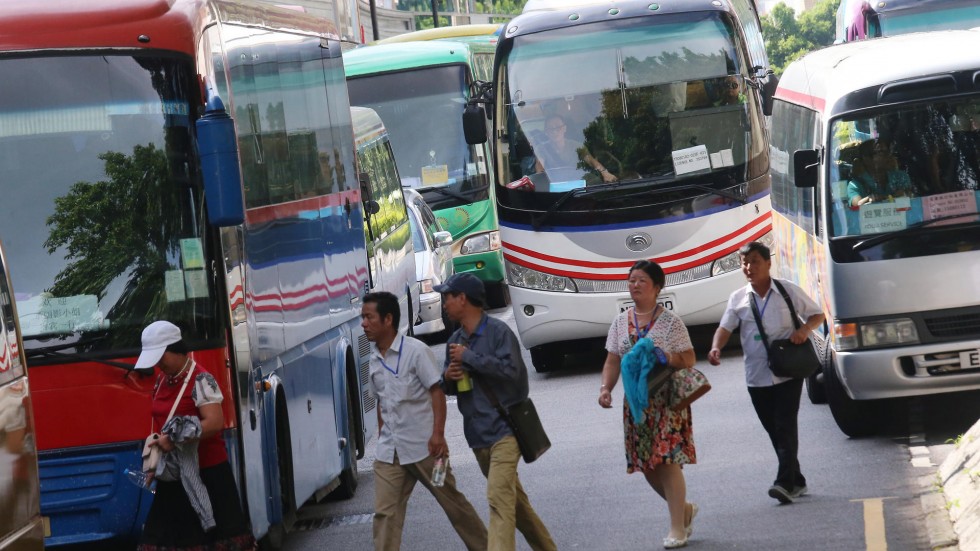
Summertime can be a nightmare for the residents of Hong Kong Island’s picturesque southern coast.
The narrow, twisting roads connecting the Aberdeen Tunnel and the towns of Stanley, Shek O and Repulse Bay slow to a crawl when the sun comes out. And the fear is new developments – including more shops, hotels, homes and a large car park in Stanley – will make the situation worse, while an MTR line opening next year will connect only the Aberdeen area.
Now Southern district councillor and planning expert Paul Zimmerman is urging residents to act, by getting behind his call for restrictions on tour coaches.
“We raised the issue several times in the district council. But unless the people voice out their concern, nothing will change,” said Zimmerman, CEO of Designing Hong Kong.
He has set up an online petition so the public can demand action on the situation, which he says is at its worst from April to June, then just before classes resume in September.
Maxine Yao, 38, has lived in Stanley for 15 years. But she has noticed its environment taking a dramatic turn for the worse. On one occasion, her daughters were some three hours late returning from school in Pok Fu Lam.
“One single bus having an engine problem creates a big problem. It’s ridiculous.”
Yao, a member of the Stanley Residents Concern Group, says the roads are too narrow for the huge number of cars and buses.
The problem is worst at weekends, when scores of drivers park illegally on Stanley Beach Road. She also sees safety risks, pointing to Transport Department figures showing that the number of road accidents in the district grew from 339 in 2010 to 428 last year.

And Yao said the tourist influx had also had an impact on the area’s character.
“Stanley has sufficient attractions for tourists,” she noted. “It’s a very green area, where people can relax. We should protect this, instead of attracting more mainland tourists. This is not Causeway Bay.”
David Schaus, 39, sees a similar picture from the balcony of his Repulse Bay home. Passengers spill out of dozens of buses and cars on Beach Road – while drivers park with engines on.
“I have a two-year-old son. I don’t like the idea of him being in such an environment,” he said.
The online petition suggests introducing a permit system for non-franchised buses on Repulse Bay Road, Island Road, Stanley Gap Road and Tai Tam Road. Preference would go to buses run by schools, residential buildings and employers.
The Transport Department said the problem was not the capacity of the roads, but “prolonged stopping of vehicles” to drop off or pick up passengers. A new loading bay for coaches by Repulse Bay Beach had gone into operation last week, with police asked to act on illegal parking.
The department said a permit system would have to be “carefully examined as it would not only affect tourists … but also bring unnecessary disturbance to various stakeholders”.
Zimmerman sees three options: stop new developments, widen the roads, or perform traffic management. In his opinion, the tour trade brings a “lot of cost to society” but residents “don’t get much benefit”.
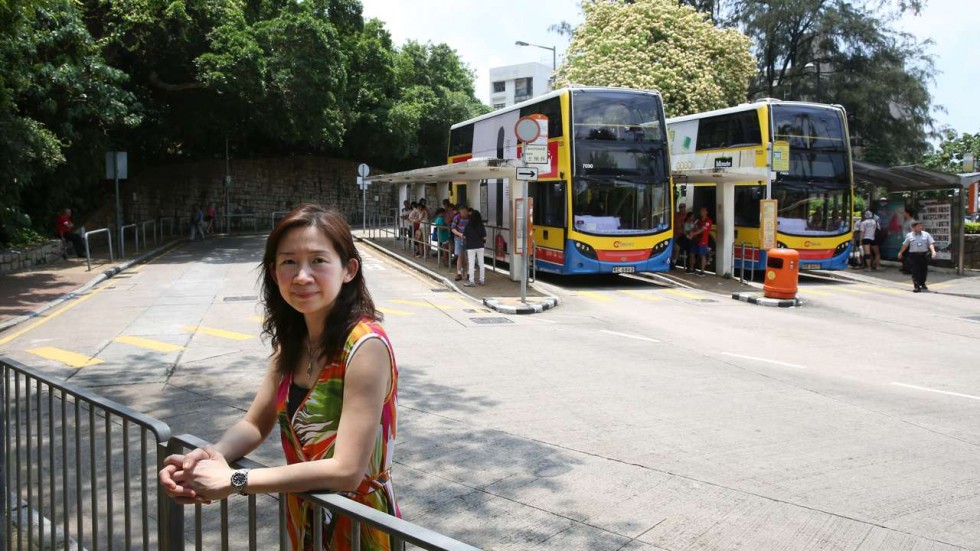
A dispute over a car park in Stanley has been reignited with the Southern District Council urging the Transport Department to make a decision on the project.
First proposed in 1994, the plan calls for a multi-storey car park to be built on the site of the Stanley bus terminus.
Initial plans had the car park being built above ground, with the bus terminus underneath. However it has been flipped, with the car park now going underground.
Stanley split over plan for multi-storey car park to handle weekend crush
District councillors supporting the construction want the government to make a final decision, hoping to bring an end to the two-decade impasse over the project.
But opponents want the Transport Department to take heed of more than 800 objections to the project submitted to the Town Planning Board last year.
Maxine Yao Jie-ning, a member of the Stanley Residents Concern Group, has been spearheading the campaign against the car park for nearly two decades.
Yao led a small protest of Stanley residents during a district council meeting on April 5, and petitioned the Transport Department to reject the project.
She queried the need for a large car park at the bus terminus, as statistics from the Transport Department showed that metered parking facilities were in short supply on Sundays but nearly half empty on weekdays.
Stanley residents are worried that their town will become too congested. Photo: iStockphoto
Yao acknowledged more parking spaces were needed in Stanley on Sundays, but she said a car park would be better located in a vacant lot behind Stanley Plaza, which is currently managed by the Link Reit and opened on Sundays for parking.
She said a car park in that area would move traffic away from the heart of Stanley, easing weekend congestion.
However, a Transport Department spokesman said the bus terminus location was appropriate as it would be close to the beach and the centre of Stanley.
Southern district councillor Paul Zimmerman acknowledged the heart of Stanley could get congested.
“There’s a lot of street-side parking throughout Stanley. They drop somebody off at the beach and then start circling, hoping that somewhere along the street somebody leaves and then they can park there,” he said.
“That is causing congestion and it’s annoying.”
But he warned that building a car park at the bus terminus could be counterproductive.
“The moment they have a multi-storey car park they will reduce street-side parking for cars and increase street-side parking for coaches.”
The prospect of idling coaches along Stanley Beach Road is not something area residents want to be subjected to, he said.
In a reply to a letter sent by Yao urging the Transport Department not to approve the car park, Transport Commissioner Allan Kwok Wai-Cheong said: “We will keep reviewing the case and discuss with various stakeholders on the need [for] the proposed car park and refinement of the design to address various concerns.”